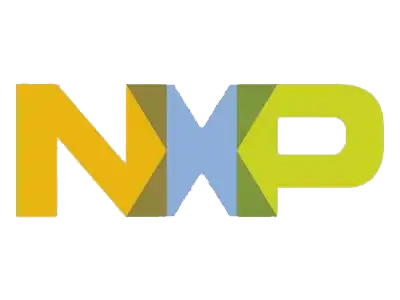In the last decade, Cloud computing has gone from being a revolutionary technology to a standard enterprise utility. Businesses across industries are drawn to the Cloud for its unmatched flexibility, elastic scalability, and pay-as-you-go pricing model that caters to rapid innovation cycles. However, this agility is a double-edged sword as it can often lead to the biggest Cloud pain point of all: unmanaged costs.
Many organizations discover that the very same Cloud tools enabling agile development and fast time-to-market deployments can quickly spiral out of control with runaway spending, opacity, and wasted resources. The capex and recurring expense dynamic shifts, and it requires a much sprightly form of financial governance than the traditional budgeting and process.
This is where FinOps (Financial Operations) steps in, introducing financial intelligence and accountability into Cloud operations.
FinOps: A Brief Overview
FinOps is a practice, community, and culture, all rolled into one, that aims to bring finance, engineering and operations teams together to understand and manage the Cloud spend. FinOps is not simply cost reduction; it is a journey to achieve a culture of shared responsibility, real-time visibility, and data-driven optimization.
The main questions at the heart of the FinOps mindset are:
- Where is the Cloud budget going?
- Who is using it?
- What is the purpose?
- Are we getting the maximum value from each dollar we spend?
- How can we scale efficiently and effectively without sacrificing financial discipline?
FinOps is an approach to Cloud cost management and optimization that is different from traditional cost control. FinOps is not siloed or periodic; it is integrated, continuous, and collaborative. It is about shifting Cloud cost management from a mere back-office afterthought into real-time, collaborative, and strategic discipline.
The Importance of FinOps Cloud Environments
In the days of capital-intensive on-premises environments, infrastructure spending was high up-front, but that also made it easy to plan and predict. One would purchase hardware, provision it, and depreciate it on a multi-year schedule. Cloud billing is different. It is consumption-based, granular, complex, and it can change over time depending on the usage of the services.
The 3 Phases of FinOps Maturity
Most organizations move through three core phases in their FinOps journey:
Inform – The inform phase is all about visibility. The inform stage begins with tagging Cloud resources, mapping spend to business units and building cost dashboards to help teams understand where money is being spent and why.
Optimize – The optimize phase is where the FinOps teams begin making changes to the way they consume Cloud services to maximize the value of their spending. This might include rightsizing instances, scheduling idle resources to shut down automatically, implementing Reserved or Savings Plans and setting up usage alerts so teams can catch cost overruns before they happen.
Operate – In the operation phase, FinOps is fully embedded into the daily operations of a business. Engineering and finance teams collaborate continuously, budgets are reviewed regularly, and financial data becomes an input into all technical decision-making.
eInfochips Enables Companies Apply FinOps Principles
At eInfochips, we have assisted enterprises in various industries in building FinOps as a core organizational capability. We start with strong visibility, automating cost tracking, tagging Cloud resources to respective business units, and creating intuitive dashboards that surface actionable insights.
We collaborate with both the engineering and DevOps teams to standardize tagging, configure real-time alerts, and implement scripts for automation like resource scaling and idle resource cleanup. We use Cloud-native tools including AWS Cost Explorer, Azure Cost Management, along with custom platforms like Grafana and Power BI to make the Cloud financial management, spending visible, optimized, and well-governed.
Our FinOps advisory services go beyond tooling. We help organizations cultivate a cost-aware culture where finance, engineering, and leadership align around Cloud usage goals and shared accountability.
For instance, a global smart appliance company partnered with us to gain control over their escalating Azure Cloud costs. With over 30,000 connected devices sending real-time data for analytics, firmware updates, and diagnostics, their Cloud bills have become unpredictable and difficult to manage.
We implemented structured tagging, automated firmware updates during non-peak hours, optimized storage tiers for cold data, and enabled predictive analytics to streamline resource usage. Additionally, we established clear internal budgets and cost ownership across teams. This effort led to a 57% reduction in the monthly Cloud costs per device, saving the company over $3 million annually, while doubling the scale of their device deployment.
This is just one example of how eInfochips transforms reactive Cloud cost control into a proactive financial strategy. Whether it is manufacturing, healthcare, automotive, or retail—we enable enterprises to take charge of their Cloud economics and align spending with business growth.
ShapeMaking FinOps Sustainable
Achieving FinOps sustainability is not a short-term project to “clean up the mess.” The most successful FinOps programs are those where engineering and finance teams are in tight alignment, whereas much of the work as possible can be automated to maintain a consistent cadence without manual intervention, and the process is always “running.”
Elements that make for sustainable FinOps include:
- Continuous real-time feedback loops
- Integrated cost controls and governance
- Business outcome mapping (i.e., $/user/$/transacted value)
- Alignment of the program with the team and organization culture
Sustainable FinOps activities grow and improve over time, but do not hinder or slow development and deployment activities, including rapid experimentation.
The FinOps process needs to mature in parallel to DevOps, CI/CD, infrastructure as code, and other Cloud-native enablement processes to support agility and innovation without creating organizational blind spots or leaving dollars on the table.
Cloud Agility Needs Financial Intelligence
The Cloud allows organizations to operate with unprecedented flexibility and speed. However, without the financial guardrails and controls that a FinOps process can provide, the Cloud can be a source of unbridled chaos and waste. With FinOps, companies can exercise better financial discipline as they continue to innovate and scale at speed. By putting a strong Cloud FinOps process in place, businesses can help reduce waste, maximize efficiency, and ensure that Cloud spending has measurable impact and clear ties to business value.
At eInfochips, we help organizations transform their Cloud spending into a strategic asset. Whether you are at the start of your FinOps journey or looking to mature your existing practice, our expertise, tools, and industry experience will help you turn Cloud complexity into clarity and value.











